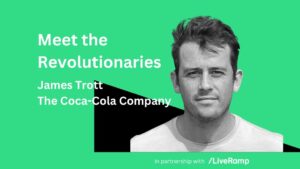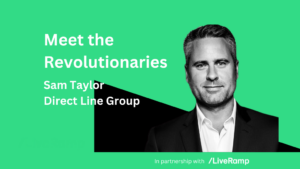Wavemaker UK recently promoted Andy Collins to the post of Head of Planning. New Digital Age spoke to Collins and asked how media planners are navigating the challenges of an increasingly complex and fragmented media landscape…
Wavemaker likes to talk about its ‘provocative’ approach to media planning. What exactly do you mean by that?
The world is incredibly complex for advertisers right now. Economic uncertainty and tighter margins mean that all clients are putting their media budgets under a lot of scrutiny, however, advertising remains an excellent way to find a competitive advantage over your rivals.
At Wavemaker, we see it as part of our role to break category conventions, to challenge the preconceptions of our industry, to find different and interesting ways to create an advantage for our clients. For us, that comes to life through what we call ‘positive provocation’. That sometimes means challenging the status quo, asking our clients to think differently about challenges. It’s not us saying that we know better than clients, it’s about trying to identify a competitive advantage that can drive market share. We use data and insights to inform our activation teams. We challenge them to keep asking questions and keep finding new ways to connect our clients with their target audiences.
What would you say are the key factors disrupting the advertising marketplace for your clients at the moment?
There’s a continuous tension between the old and the new. We work in an industry that operates at the cutting edge of innovation and technology. AI is the buzzword of the moment, just as the Metaverse was a couple of years ago. New innovations create new opportunities for brands, so there’s always a balance to be struck between investing in tried-and-tested channels and leveraging the potential of emerging channels.
There’s also an ongoing tension between client demands for campaigns that produce measurable short-term results and their need for brand growth over the longer-term. It’s always an interesting challenge for media planners to balance those needs across a plan.
There’s a lot more to a media planning role than most people realise. It’s not just a case of selecting the channels and the platforms and the places that our clients turn up. That’s part of the equation, for sure,. but there’s more subtle factors, the ‘body language’ of a brand, if you like. The way that we want to show up in a home for brand A versus brand B could be completely different. The canvas remains the same, but there’s a lot of nuance to how a brand campaign can cut through and create impact.
Has the emergence of channels such as CTV and digital OOH created more fragmentation and complexity for media planners?
There’s definitely been a rush towards more addressable, personalised ways of communicating. One way of approaching that is to harness the power of first party data, however, our view as an agency is that first party data could lead to a dead-end in a couple of years. We’ve taken more of a geo-based approach to how we think about addressability, fragmentation and things like that. Geo-based markers are a really powerful and relatively future-proofed way to identify and scale different kinds of audiences.
As we start to delve further and further into this programmatic addressable world, we need to be sure that we are considering when is the right time for a brand to lean into that addressability. Likewise, when is the right time to go big and bold, to be impactful and broad? Answering those questions is part of the real craft of planning. There’s an art to turning a brief into a real campaign.
The ad industry has tended to create these categories, for example, Out of Home, but the reality is that Out of Home means everything from Piccadilly Lights to a suburban bus stop or a screen in the back of a taxi cab. The arbitrary categories and channels we use to discuss advertising doesn’t always reflect the way that consumers actually experience advertising. We need to constantly recategorize and examine how the impacts of our various investments add up. For me, it’s less about ‘new channels’ and more about continuously considering the breadth of channels on offer and recategorising them into effective clusters.










